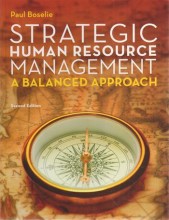Summary: Stuvia 3673522 Lectures Economics And Sustainable Development
- This + 400k other summaries
- A unique study and practice tool
- Never study anything twice again
- Get the grades you hope for
- 100% sure, 100% understanding
Read the summary and the most important questions on Stuvia 3673522 lectures economics and sustainable development
-
1 Lecture 1 Introduction; sustainability: what and why?
This is a preview. There are 25 more flashcards available for chapter 1
Show more cards here -
What is the role of IPCC in understanding climate change?
IPCC collaborates to compile literature and knowledge about climate change impacts.- They produce reports for wider use.
- Do not conduct independent research.
- Aim to present a comprehensive view.
-
How does population growth affect sustainability?
Sustainable challenges arise mainly from consumption and production methods.- Population growth is rapid.
- Lifestyle factors complicate sustainability.
- Overall, focus extends beyond mere population size.
-
What does GDP per capita indicate?
GDP per capita measures wealth produced relative to the population.- Indicates economic output of a society.
- Useful for comparing wealth among countries.
- Reflects differences in living standards.
-
How does wealth distribution vary globally?
Wealth is unevenly distributed across countries.- Western countries have welfare states.
- Access to healthcare is limited in poorer nations.
- Economic disparities influence overall wellbeing.
-
What is the relationship between wealth and energy needs?
Increased wealth leads to higher energy demands.- Historical reliance on nonrenewable energy sources.
- Insufficient renewable energy capacity currently.
- Energy access is not universal, increasing environmental pressure.
-
What does material footprint represent?
Material footprint quantifies natural resources extracted for consumption.- Reflects societal resource usage.
- Important for assessing sustainability practices.
- Tied to overall ecological impact.
-
What does Earth Overshoot Day signify and which key environmental risks are highlighted?
Earth Overshoot Day marks when humanity uses more natural resources than Earth can renew in a year. Key environmental risks include:- Climate Change
- Novel Entities
- Biosphere Integrity
- Land-System Change
- Freshwater Use
- Biogeochemical Flows
- Ocean Acidification
- Stratospheric Ozone Depletion
- Atmospheric Aerosol Loading
-
What happens if humanity remains within the safe operating space of planetary boundaries?
Staying within the green zone allows for:- Continued development for future generations
- Prevention of large-scale irreversibility
- Mitigation of various environmental issues
-
What risks are associated with moving into the red zone of planetary boundaries?
Transitioning to the red zone can lead to:- Increased irreversibility on a large scale
- Significant environmental consequences
- Challenges beyond climate change, such as land-system change
-
What key areas are impacted by planetary boundaries beyond climate change?
Several key environmental factors are affected, including:- Land-system change
- Freshwater availability
- Biological chemical flows
- Ocean acidification
- Novel entities like plastic
- Higher grades + faster learning
- Never study anything twice
- 100% sure, 100% understanding
Topics related to Summary: Stuvia 3673522 Lectures Economics And Sustainable Development
-
Introduction; sustainability: what and why?
-
Weak VS Strong sustainability
-
How to value nature?
-
The limits of economic growth as we know it
-
Alternatives for the future
-
Impacting individual behaviors
-
Engaging citizens
-
Transnational policies
-
Innovation policy and the energy sector
-
Money and green finance across the world
































